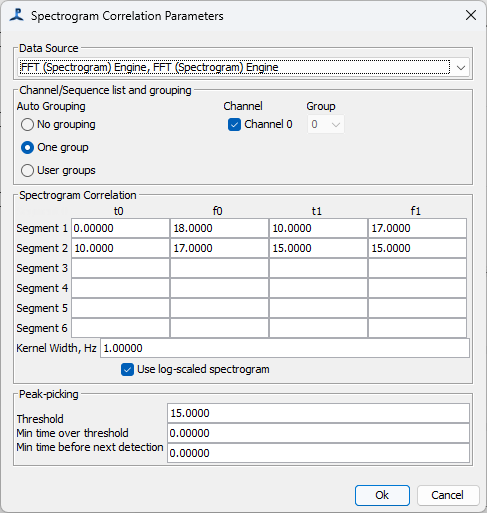Spectrogram Correlation
This method works by cross-correlating a spectrogram of Ishmael�s input signal with a synthetic time-frequency kernel. It works well when there is some amount of variability in the call type to be detected; certain parameters in construction of the kernel can be arranged to allow more or less variability in the calls to be detected. The construction of kernels, and their performance, is beyond the scope of this guide, but more information is available elsewhere (Mellinger and Clark, 2000).
Adding the module
From the PAMGuard file menu select Add Modules > Detectors > Ishmael spectrogram correlation.
Give a name to the detector, and hit OK.
This detector will require that you also configure a FFT (Spectrogram) Engine as it’s input.
Configure the module
From the PAMGuard Settings menu select Ishmael spectrogram correlation Settings … to open the dialog

Select the FFT data source. You should think carefully about the best FFT Length and FFT Hop to use based on the sample rate of your data and the type of sound you are trying to detect. See here for more information on this important, but often overlooked, topic.
Select which channels you want to process and how you want them to be grouped. If channels are in the same group, it’s slightly easier for the PAMGuard localisers to measure time delays between data on the different channels, but only if the hydrophones in each group are quite close together.
Create the kernel
Create the outline of the sounds you’re trying to detect. Before entering data, you’ll need to look at some sounds and make measurements of their time frequency contours. Divide the ‘typical’ contour up into sections that can be approximated by straight lines, and enter them here. The start time of each segment should be equal to the end time of any preceding segment.